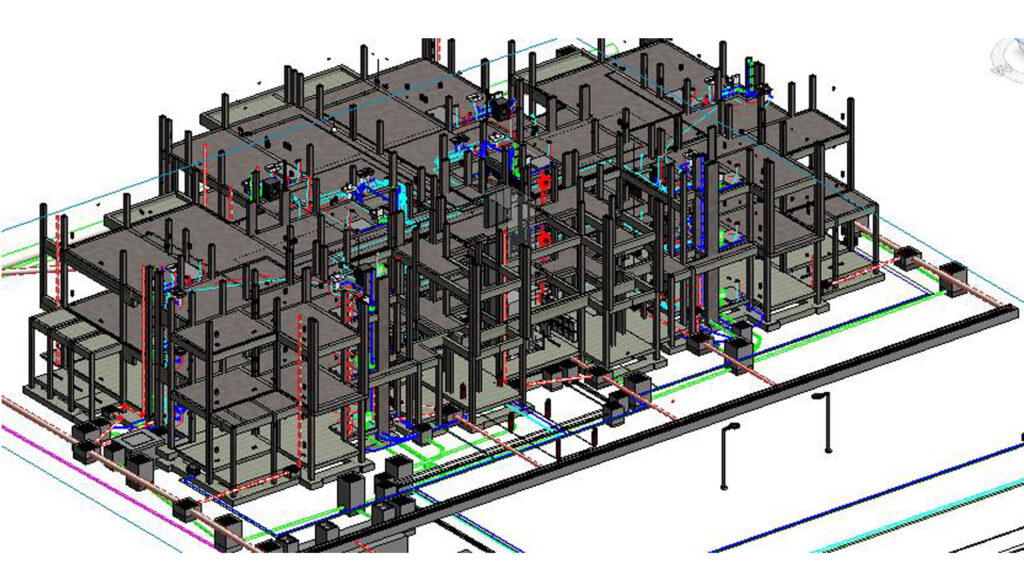In the dynamic landscape of modern construction, Structural Building Information Modeling (BIM) services stand out as a transformative force. These services go beyond traditional approaches, offering integrated solutions that redefine how buildings are designed, constructed, and managed. This blog explores the multifaceted world of Structural BIM services, delving into their significance, benefits, challenges, and the pivotal role they play in shaping the future of the construction industry.
The Evolution of Building Information Modeling
Building Information Modeling, or BIM, represents a departure from conventional 2D drawings and static blueprints. It is a holistic approach that involves creating and managing digital representations of physical and functional characteristics of a building. Structural BIM service, a subset of BIM, focus specifically on the structural elements of a construction project.
The Significance of Structural BIM Services
At the core of Structural BIM services is the emphasis on collaboration and integration. Unlike traditional methods, where various aspects of a project are often treated in isolation, Structural BIM promotes a unified approach. Engineers, architects, contractors, and other stakeholders collaborate in a shared digital environment, fostering better communication and reducing the likelihood of errors or conflicts during the construction process.
One of the primary advantages is the ability to create a 3D model of the structure. This goes beyond a mere visual representation; it encompasses a detailed digital twin that includes information about materials, quantities, spatial relationships, and even the behavior of the structure under different conditions. This wealth of information facilitates better decision-making at every stage of the project.
Benefits of Integrated Building Solutions
Enhanced Collaboration: Structural BIM service break down silos between different disciplines involved in a construction project. This integrated approach ensures that all stakeholders work from the same information, minimizing misunderstandings and streamlining the workflow.
Early Issue Detection: The 3D model created through Structural BIM allows for the identification of clashes or issues in the design phase itself. This early detection mitigates the risk of costly rework during construction, saving both time and resources.
Improved Efficiency: The detailed information within the BIM model enables accurate quantity take-offs and cost estimations. This not only aids in project budgeting but also enhances overall project efficiency by providing a clear roadmap for construction.
Lifecycle Management: Beyond construction, Structural BIM services contribute to effective facility management. The digital twin created during the design and construction phases becomes a valuable asset for ongoing maintenance, renovations, and future expansions.
Challenges in Implementing Structural BIM Services
While the benefits are substantial, the implementation of Structural BIM service is not without challenges. Some common hurdles include:
Initial Investment: Adopting BIM technology requires a significant initial investment in software, training, and infrastructure. This can be a barrier for smaller firms or those with limited resources.
Resistance to Change: The construction industry has traditionally been resistant to adopting new technologies. Convincing stakeholders to transition from conventional methods to BIM can be a gradual process, requiring education and demonstration of the tangible benefits.
Interoperability Issues: Different stakeholders in a project may use different BIM tools, leading to interoperability challenges. This can hinder the seamless exchange of data between different software platforms.
Paving the Way for Future Innovations
As technology continues to advance, Structural BIM services are poised to undergo further innovations that will shape the future of construction. Some emerging trends and potential developments include:
Integration with IoT: The convergence of Structural BIM with the Internet of Things (IoT) is a promising frontier. Real-time monitoring and analysis of building performance, coupled with data from sensors, can enhance predictive maintenance and optimize energy efficiency.
Machine Learning for Design Optimization: Incorporating machine learning algorithms into BIM services can revolutionize design optimization. By learning from past projects, these algorithms can suggest optimal design solutions, taking into account historical data and industry best practices.
Block chain for Data Security: Addressing concerns related to data security and integrity, the integration of block chain technology can enhance transparency, traceability, and security in sharing and managing project data among stakeholders.
Conclusion
In conclusion, Structural BIM services represent more than just a technological upgrade; they signify a fundamental shift in how we approach construction. The integrated building solutions they offer are not just about creating better structures but about fostering collaboration, improving efficiency, and embracing sustainability. As ENGISOFT ENGINEERING – BIM Staffing & BIM Services navigate the complexities of modern construction, Structural services emerge as a beacon guiding the industry towards a future where innovation, collaboration, and sustainability converge to build structures that stand the test of time.

